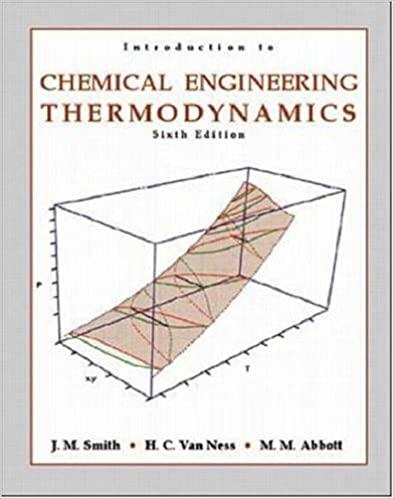Answered step by step
Verified Expert Solution
Question
1 Approved Answer
A reactant, A, is to be decomposed by the following microbial fermentation: A R + C The decomposition follows Monod kinetics as indicated below: =
A reactant, A, is to be decomposed by the following microbial fermentation: A R + C The decomposition follows Monod kinetics as indicated below: = 2.25 + 2.65 , 3. As a microbial scientist, you and your team determined the following parameters: CA0 = 8 kg/m3 CR0 = 0 kg/m3 CC0 = 0 kg/m3 C,A = 0.5 kg cells/kg substrate A 4.1. You are tasked to determine the absolute maximum flow rate to the reactor that will lead to cell growth taking place provided the fermentation takes place in a CSTR with volume, VM = 1 m3 . [6] Being a young researcher, you want to explore the following possibility: 4.2. If two CSTRs with volume, VM = 1 m3 , are used in series with a flow rate of 1.5 m3 /h, what will be the lowest possible substrate concentration and the highest possible cell concentration leaving the reactor series given that no bypass or recycle may be utilised? [12] 4.3. Can you improve on the outlet concentrations reported in Question 1.2 by using appropriate piping (recycle, bypass or side taps) - determine substrate and cell concentrations? [12]
Step by Step Solution
There are 3 Steps involved in it
Step: 1

Get Instant Access to Expert-Tailored Solutions
See step-by-step solutions with expert insights and AI powered tools for academic success
Step: 2

Step: 3

Ace Your Homework with AI
Get the answers you need in no time with our AI-driven, step-by-step assistance
Get Started


